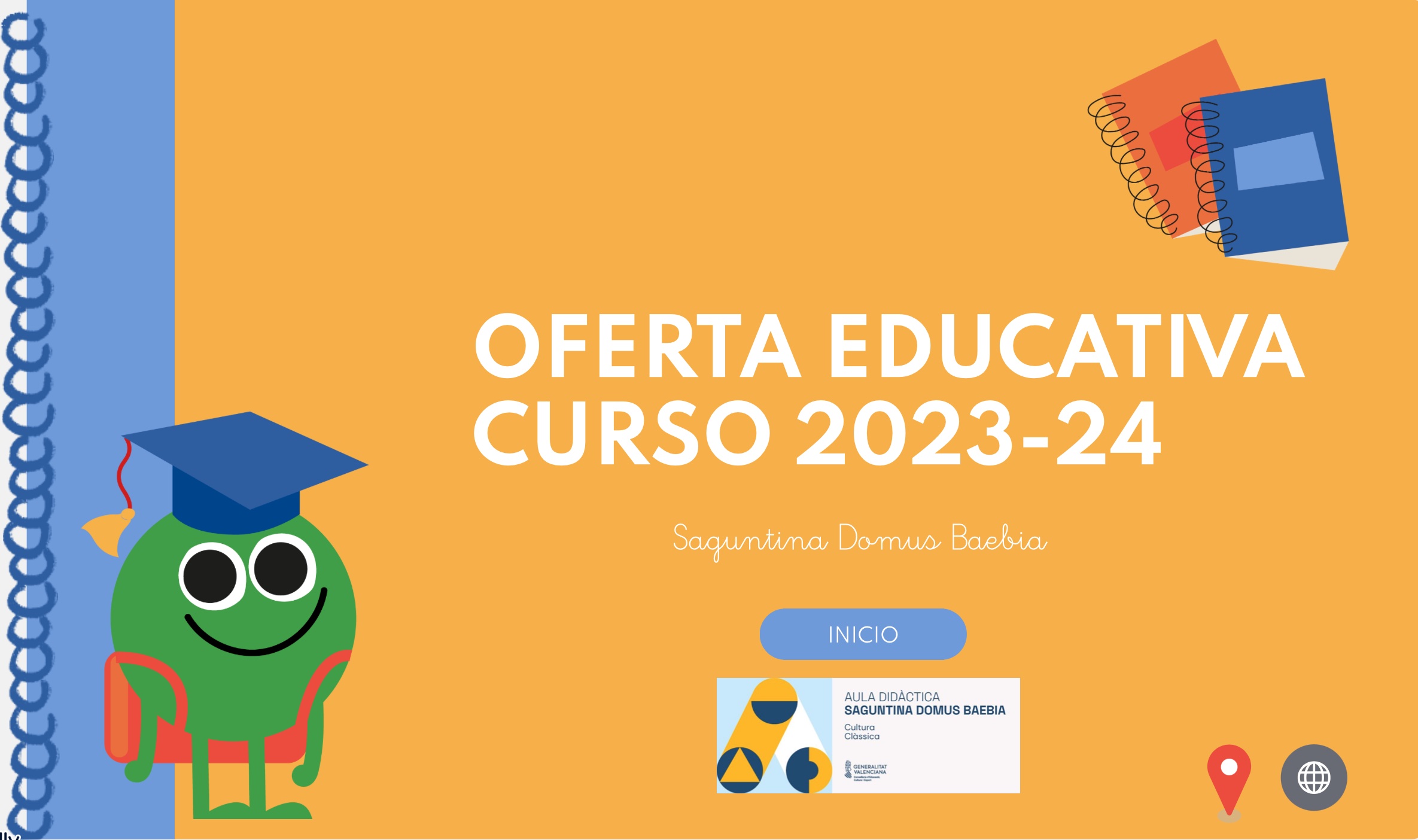
Schedule:
9 a.m. to 14:30 p.m.
Hours to welcome and teach visiting students:
9:30 a.m. to 14:00 p.m.
Days:
from Tuesday to Friday. On Monday the centre will be closed to the public, due to the organizational and administrative tasks of the Domus, since the Theatre, the Forum and the Museum of Sagunto are all closed that day.

LaThe Domus Baebia offers schools a very open and dynamic experience, depending on the time of the visit and the number of students. A wide range of activities and workshops are available, and the schools can choose up to two workshops along with a tour (itinera) of Sagunto’s museum, theatre, forum, the Domus dels Peixos (Domus of the Fishes), the Via Portici and the Museum of Greco-Roman Scenography.
The Domus welcomes students of all ages, from Elementary and Secondary education, to High School, Professional Development and University students.
Maximum number of students: 50. (groups with such a high amount of students may be required to split the group in two, some of them doing workshops and some others going to the itinera tour).
Individual price per workshop and student: 3 €.
Individual price for itinera tour: 2 €, (with the exception of the Domus dels Peixos and the Via Porticus, which cost 1 € each of them).

Application: You are required to fill the following application form
Application deadlines:
the Domus staff will contact the applicant schools, informing them whether their application has been accepted, and fixing the number of visiting students and teachers, as well as the available workshops for the day and hour of their visit.
The activities to be performed in the Domus and the places to visit in the itinera tour will be discussed and agreed between the Domus and the visiting school centres.

In this link we present the educational offer for the 2023/24 academic year with the list of activities and prices.
In this link you will find the technical sheet of each of the didactic workshops that we offer this academic year.

In the Saguntina Domus Baebia we think of teaching workshops as historical reenactments, bringing back the lives of the people who lived in the town of Sagunto back in 1st and 2nd centuries A.D. We know them with great detail thanks to the inscriptions kept in the town.
The gens Baebia was a prominent family of Saguntum, headed by the pater familias, Lucius Baebius Hispanus, who will lead us during our reenactment through Roman daily life, culture, politics and religion.
Along with Lucius, we shall approach Ancient Culture to the students who visit the Domus Baebia, letting them witness first-hand the daily routine of the members of the Baebia family (religious rituals, banquets, celebrations, work, etc.).
It is important to bear in mind that the historical characters who guide us in these workshops were fully real, and thus, the relationships between them are historical too (with the exception of Baebia Fulvia, daughter, and Oppia and Eros, who are a couple). There are so many characters precisely because we wanted each one of them to be represented in the many workshops we offer in the Domus.
